
EXCLUSIVE: BluPrint Correspondent Melo Albert Talks about Cultural Respect and Innovation leading Milan into the Future
If you were to witness a grand design showdown between renowned Italian architects such as Michelangelo, Bernini, and Filippo Brunelleschi VERSUS starchitects Zaha Hadid, Renzo Piano, and Bjarke Ingels; which group will you choose? (Imagine piles of parchment paper with elaborate hand sketched details against complicated metal and glass connections produced by BIM modeling systems). From someone who reveres the achievements of historical architecture and yet works in the realm of contemporary design, picking sides might be a difficult choice.
The major fashion capital, Milan is home to some of the most remarkable structures in the world. The behemoth Duomo cathedral with its glorious pink-hued white Candoglian marble exterior still stands as an iconic Gothic archetype at 600 years old. Beside it, the opulent and ornate Galleria Vittorio Emanuele II featuring a glass dome and roof, and a cruciform floor plan that works as a host platform for high-end hotels and luxury retail spaces. There’s the Castello Sforzesco as well–one of the largest citadels in Europe that holds about ten civic museums inside, all decorated by high-profile renaissance artists.
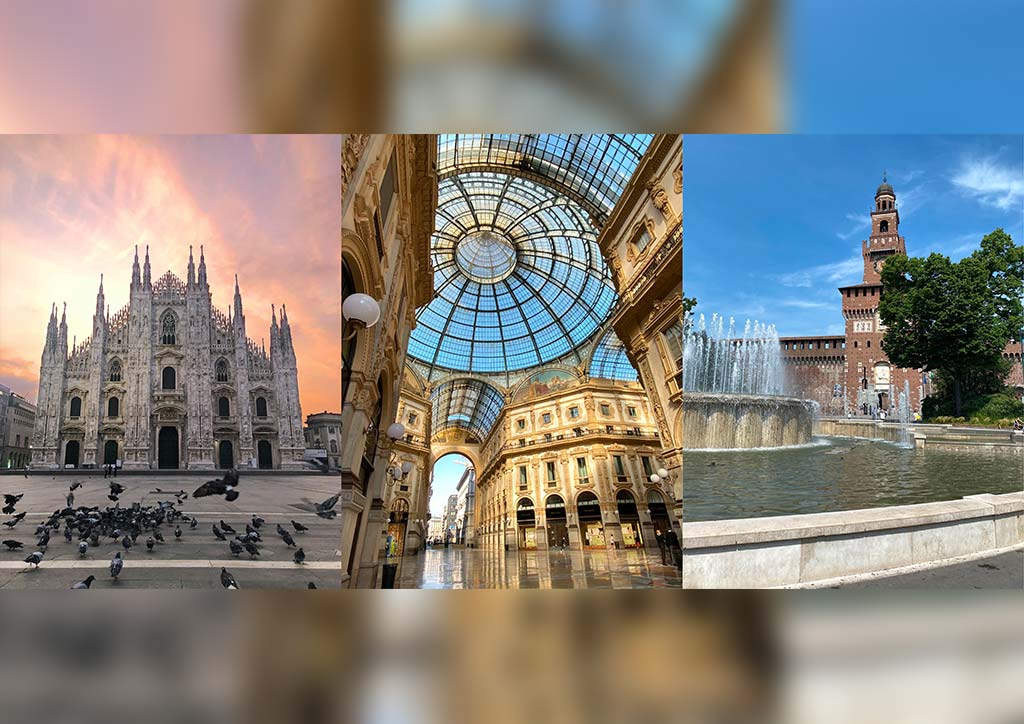
These exceptional structures are only a few of the many that justify Milan’s reputation as a haven of historical architecture. Considering that these edifices were born centuries ago, it is worthwhile to speculate how the city is adapting the current language of design, especially during this age of technological computer and construction advancements. Hence the question: “What is the Future of Milan?”
From the Milanese point of view, it is noticeable how local designers veer away from boldly mixing the old and the new. There is an almost too strong cultural respect towards old architecture that it is nearly impossible to see an audacious facade of cold glass right at the historical center. There is a very careful treatment of the old urban fabric and muted attitude towards proposing new construction.
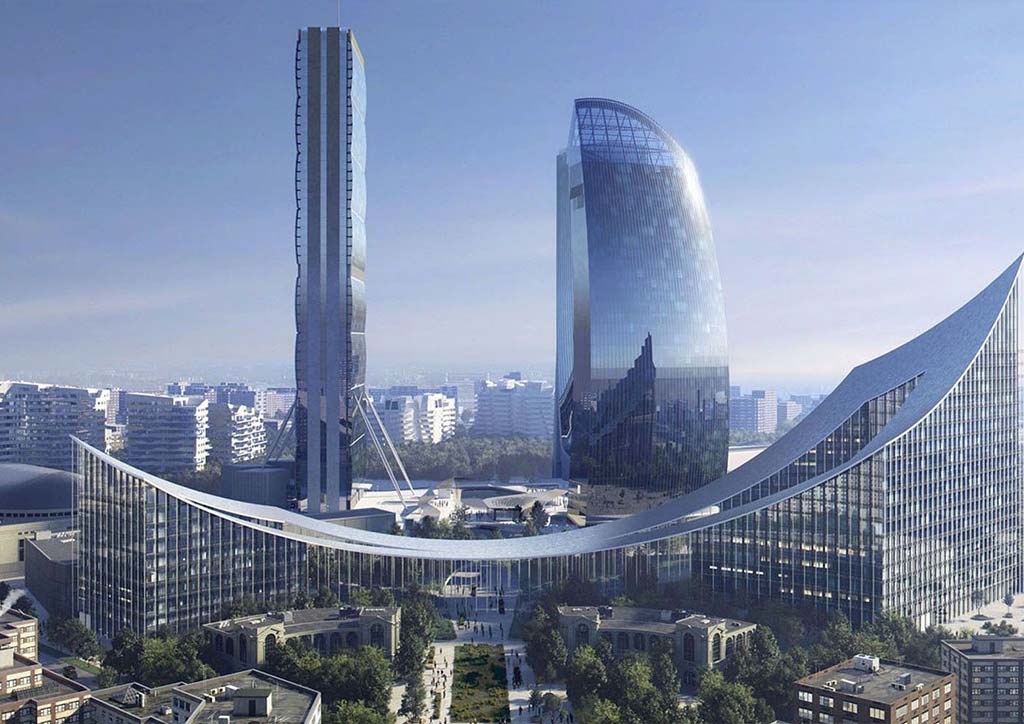
Two new allocated districts that are relatively distant from the center – Porta Nuova and Citylife are being developed recently as major hubs of new construction. At this time, the city is peppered with buildings that stand out like gems, assuring that Milan, after all, is still highly regarded as a design mecca.
PORTA NUOVA
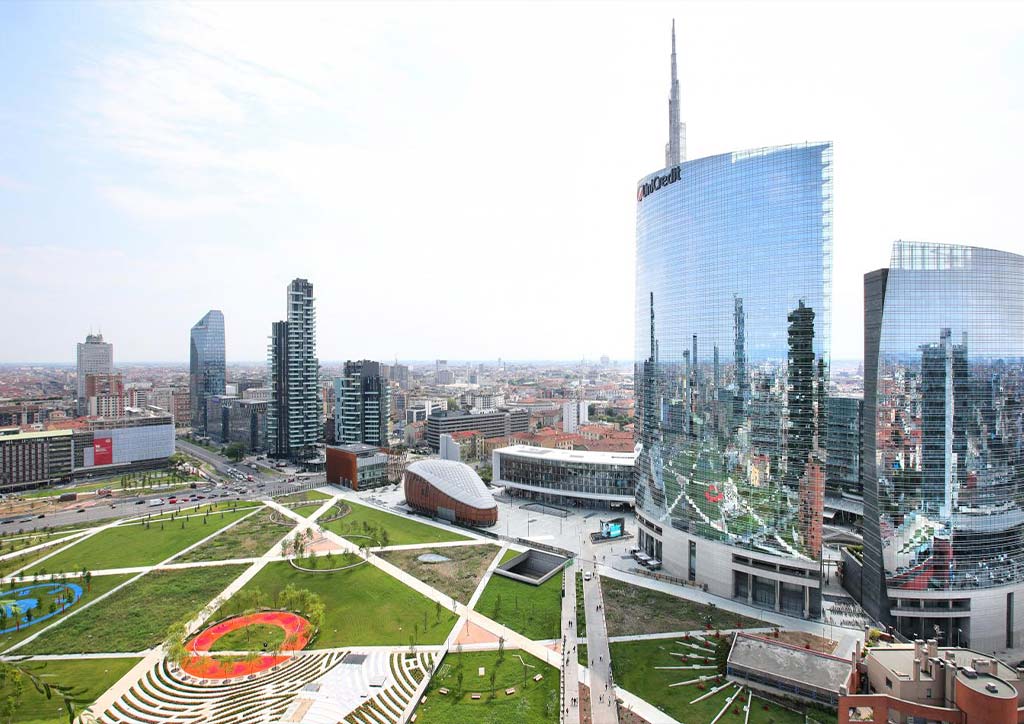
Literally translated as “New Gate,” this lively business district is now dubbed as the country’s most advanced and international zone that fuses innovative urban greenscape, social and cultural spaces, and sustainable buildings. Located north of the city center, Porta Nuova consists of three major areas: the Garibaldi by Clarke Pelli, Varesine by KPF Associates, and Isola by Stefano Boeri. The district has a beautiful array of attractions that complements the city’s historic character.
READ MORE: Design, design, design, before Build, Build, Build
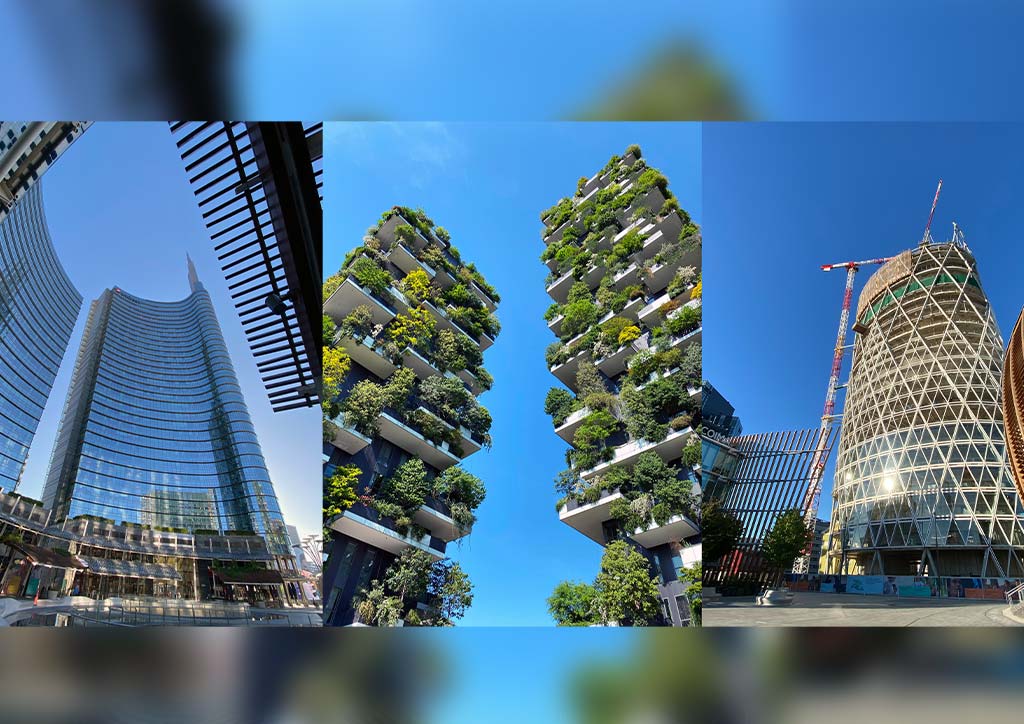
Most recognizable among the new buildings in Porta Nuova is the Unicredit Tower – the highest skyscraper designed by Cesar Pelli in Italy. For a country that is known for its ancient brick and marble landmarks, having a 231-meter glass and steel tower is a big deal. The Bosco Verticale or “Vertical Forest” by Stefano Boeri is a two-tower residential high-rise building with balconies covered with shrubs, plants, and trees. The LEED Platinum-certified Unipol Headquarters designed by Mario Cucinella meanwhile is a soon-to-rise piece that features a diagrid steel structural system with translucent cladding and warm wooden interiors.
READ MORE: Design your Future With a Powerful Laptop
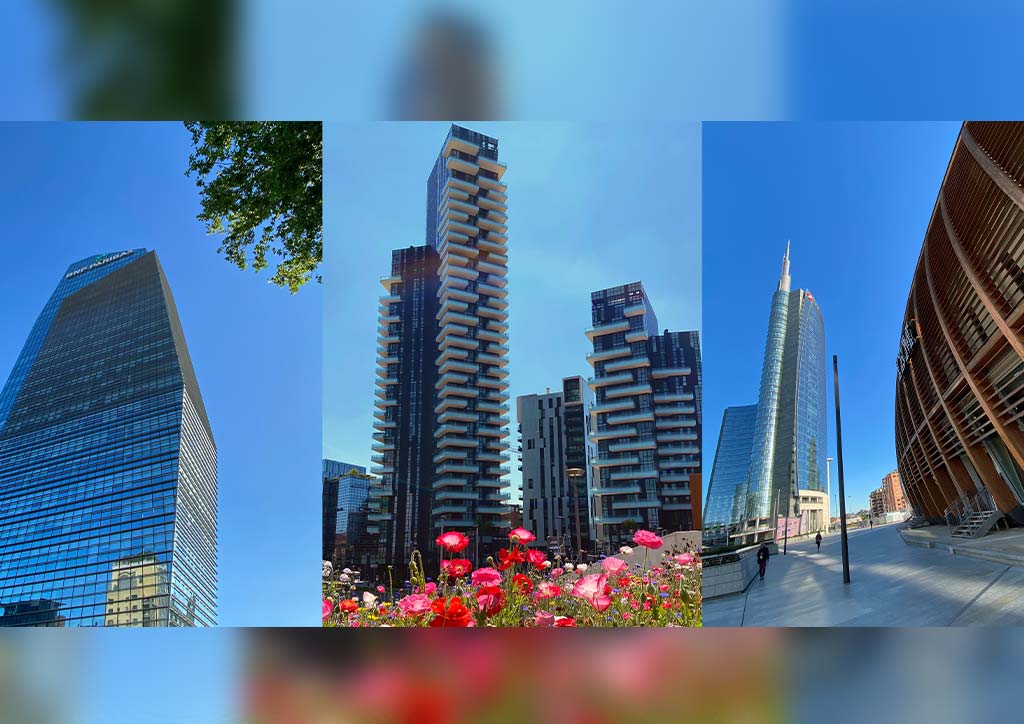
Other impressive pieces in this district include the Diamante Tower known for its irregular geometry, the Solaria Tower famous for its ultra-slim frame, and the IBM Studio exhibition space more commonly referred to as the “armadillo” for its ambiguous shape and rich wooden external skeleton.
CITYLIFE

Citylife is the newest district in Milan to undergo redevelopment after the winning bid by Generali Group. The extensive master plan features luxury residences, shopping buildings, and three skyscrapers designed by starchitects. It is hailed as Europe’s largest car-free ground surface development, which incorporates numerous pedestrian-friendly paths and bike lanes.
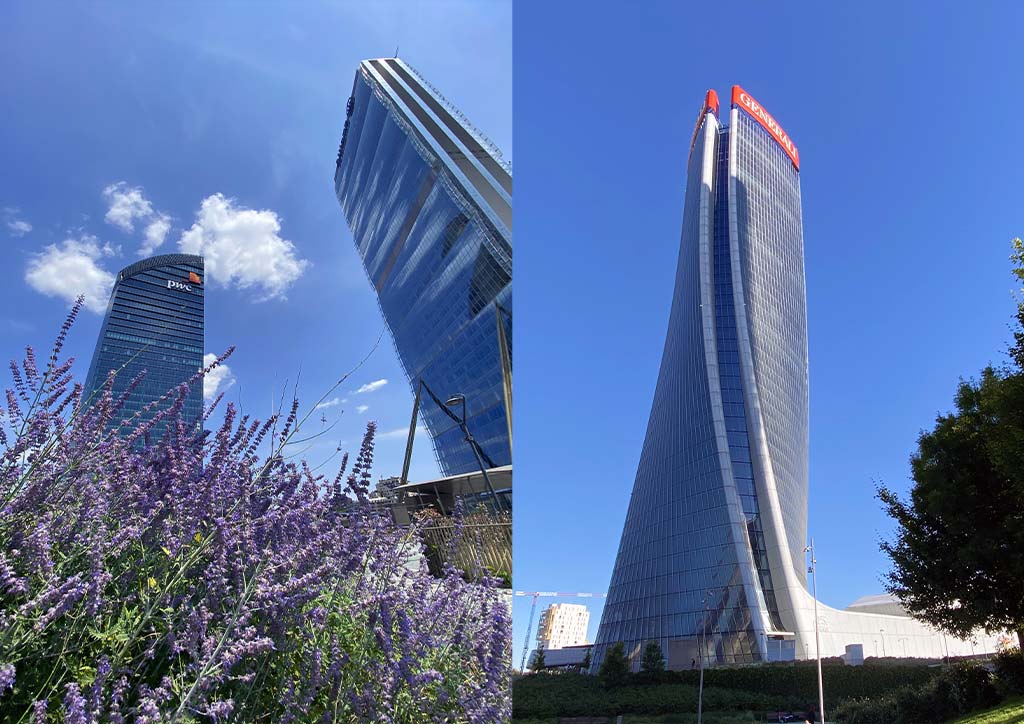
Most prominent of the district are the Tre Torri or the Three Towers, designed to reflect their architects’ aesthetics, yet sensitive enough for the discerning Milanese taste. The Allianz Tower designed by Arata Isozaki and Andrea Maffei boasts structural innovations using two belts and four massive 60-meter steel trusses for stability against strong winds. The playful and twisting Generali Tower by Zaha Hadid meanwhile is characterized by its impressive skyscraper torsion from the base up. The last is the PWC Tower designed by Daniel Libeskind which is noticeable for its curved geometric shape and prismatic vertical distribution core, partially protruding from the outline.
READ MORE: More From Anthology Festival 2021: Shelter Dialogues and What Makes a City
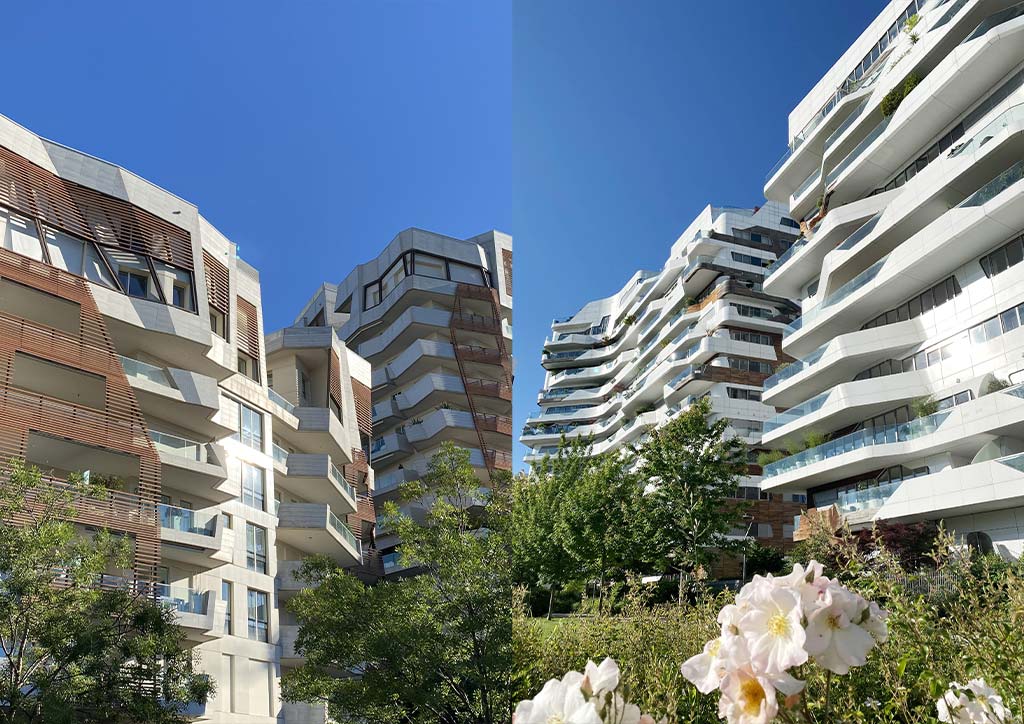
Luxury residences also by Zaha Hadid and Daniel Libeskind are the latest additions to Milanese residential typology. With apartment units ranging from studios to two-level lofts, these buildings project a bolder architectural language with Hadid’s sinuous lines and Libeskind’s angular volumes.
HUMAN TECHNOPOLE E-CAMPUS
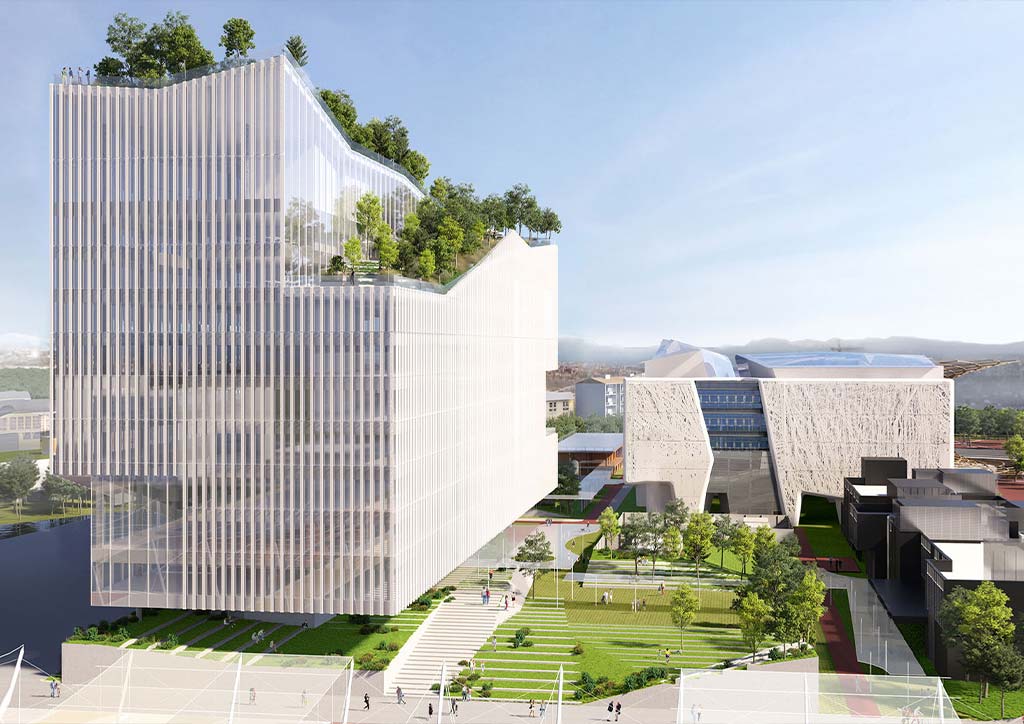
Piuarch designed a new building for Human Technopole–Italy’s research institute for life sciences which is situated at the center of the growing Milano Innovation District or MIND. At 61 meters high, the building will house over 16,500 square meters of offices and laboratories.
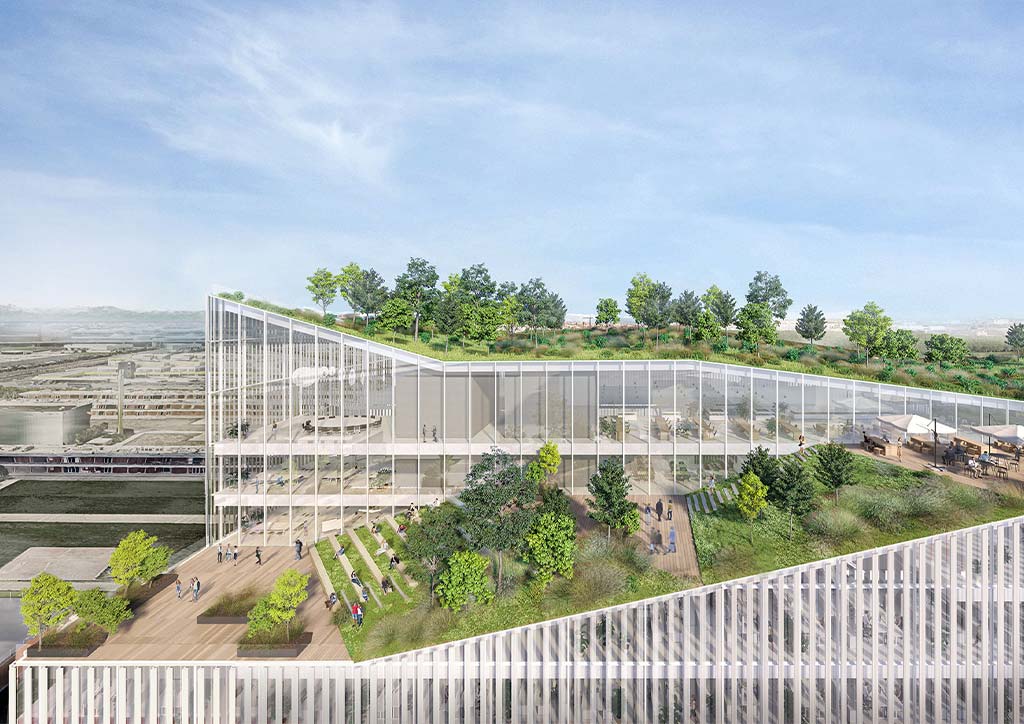
The project is conceived as a seamless continuation of open spaces from the ground floor to the upper levels to the roof, allowing vegetation and public activities to take place atop.
PIAZZALE LORETO
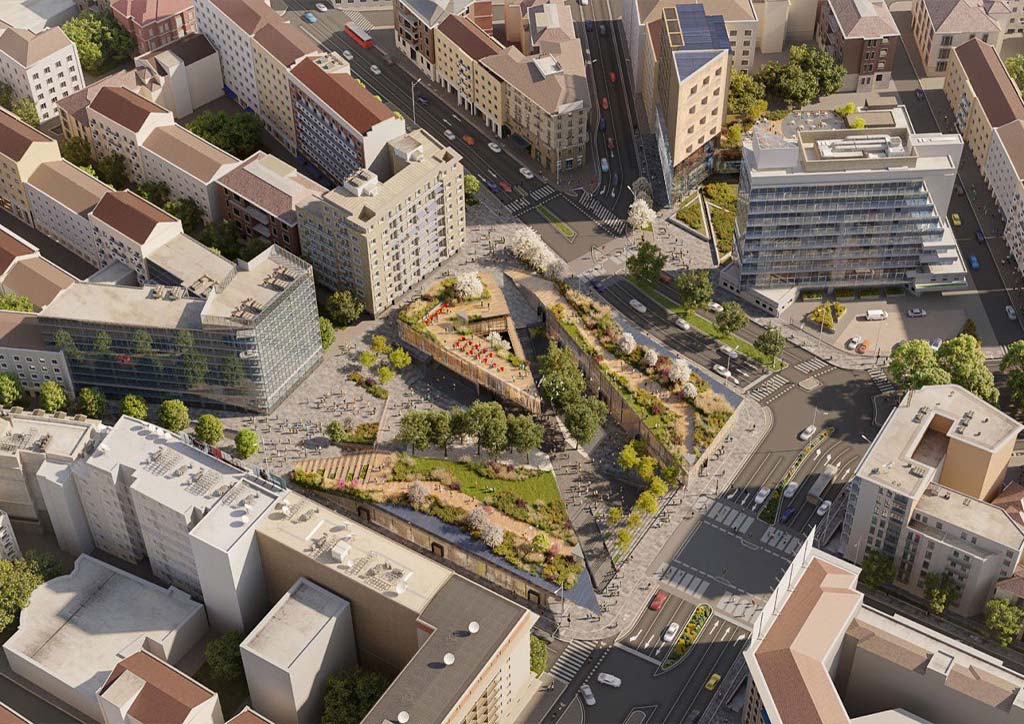
One of the busiest roundabouts in Milan will soon get a facelift after the recently concluded design competition entitled “Reinventing Cities”. It was won by the team under the leadership of Ceetrus Nhood including Metrogramma, Mobility in Chain, Studio Andrea Caputo, LAND, Temporiuso, and Squadrati.

The winning concept envisions an important node of pedestrian and bicycle mobility, an abundance of trees and suspended gardens, public plazas, and local shops.
These projects and developments show that contemporary design is alive and well-received in the city of Milan. Hopefully, the future of architecture in the city will continue to flourish in the coming years.
Notes about the Writer:
Melo Albert
Full-time architectural designer, part-time fashion globetrotter.
Milan, Italy.
READ MORE: Louis Vuitton’s new Ginza Namiki Tokyo Flagship Store


